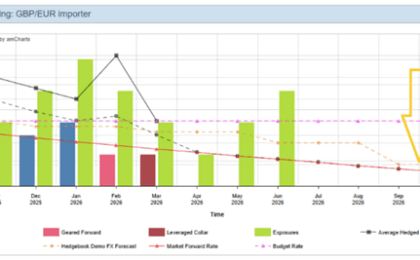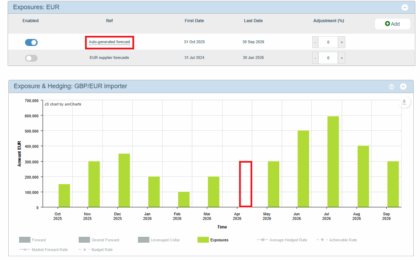Another one of those questions we are often asked relates to when you should (or shouldn’t) use zero-premium collar options when you’re hedging. For importers and exporters managing trade-related transactional FX exposures, the choice of the hedging instrument is just as important to overall performance as tactical/strategic risk management decisions to position at the minimum or maximum of hedging policy limits.
Increased volatility in many currency pairs over recent years has naturally increased option premium costs, however, it is not wise to always hedge via zero-premium collar options and you should never consider paying a premium to buy outright call and put currency options.
So, when should you consider using zero-premium collar options?
The choice between these option instruments and straightforward exchange contracts normally comes down to the following considerations:
- If the home currency spot rate is at a historical low point against the export receipt currency (say based on long-term average rates) and the lead-indicators point to a greater probability of appreciation of the home currency than further depreciation, the choice of hedge instrument is going to be heavily weighted to straight forwards.
- If the home currency spot rate is at a historical high point against the export receipt currency (based on long-term average rates) and the lead-indicators point to a greater probability of depreciation of the home currency than further appreciation, the choice of hedge instrument is more likely to be buying outright call options on the home currency.
- When the currency pairs are trading closer to long-term average levels and there is no clear indication on future direction, either way, collar options fulfil the objective of being hedged at an acceptable rate (the cap), however leaving some opportunity to participate in favourable market rate movements at least down to the collar floor level.
The trade-offs should be examined
In some respect, hedging with collars is akin to having permanent orders in the market to deal at more favourable exchange rate levels with protection on the other side along the way. Whilst zero-premium may appear attractive, FX risk managers should always examine the trade-offs of paying some premium to widen the gap between the floor and cap strike rates to provide a greater opportunity for participation in favourable rate movements.
In a similar vein, opportunities should be taken to restructure collars over the course of their term by buying back the sold cap or floor, or alternatively converting the collar to a straightforward if original target hedged rates are achievable. An active mixture of hedging instruments within policy limits should provide greater opportunity to beat benchmark and budget exchange rates.
You might also be interested in this short video on entering an FX Collar in Hedgebook.





